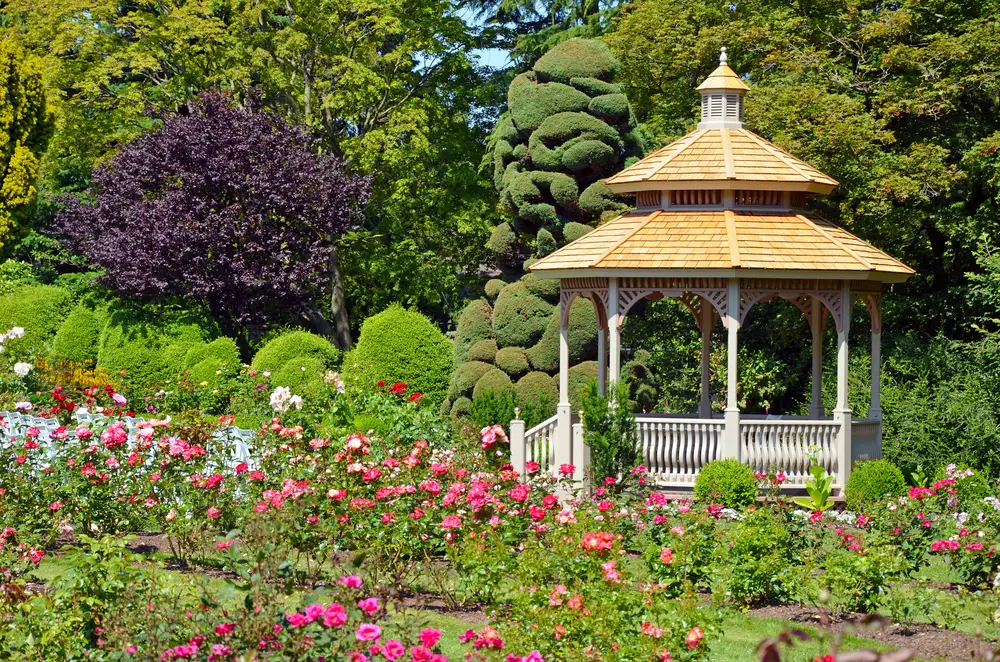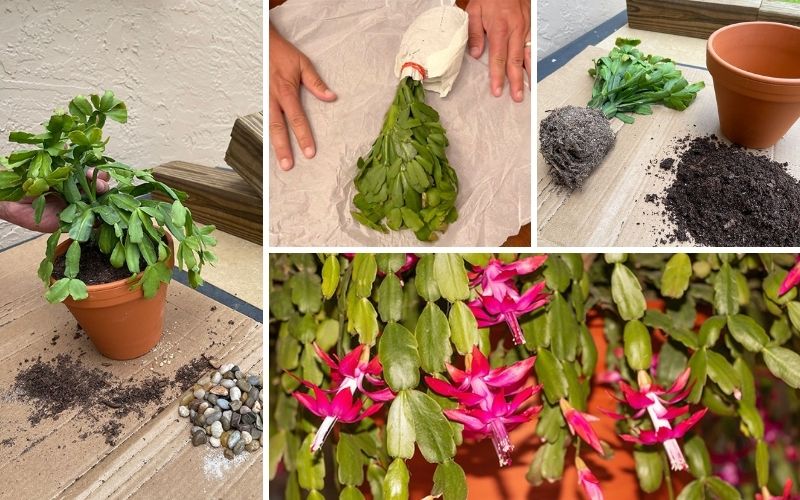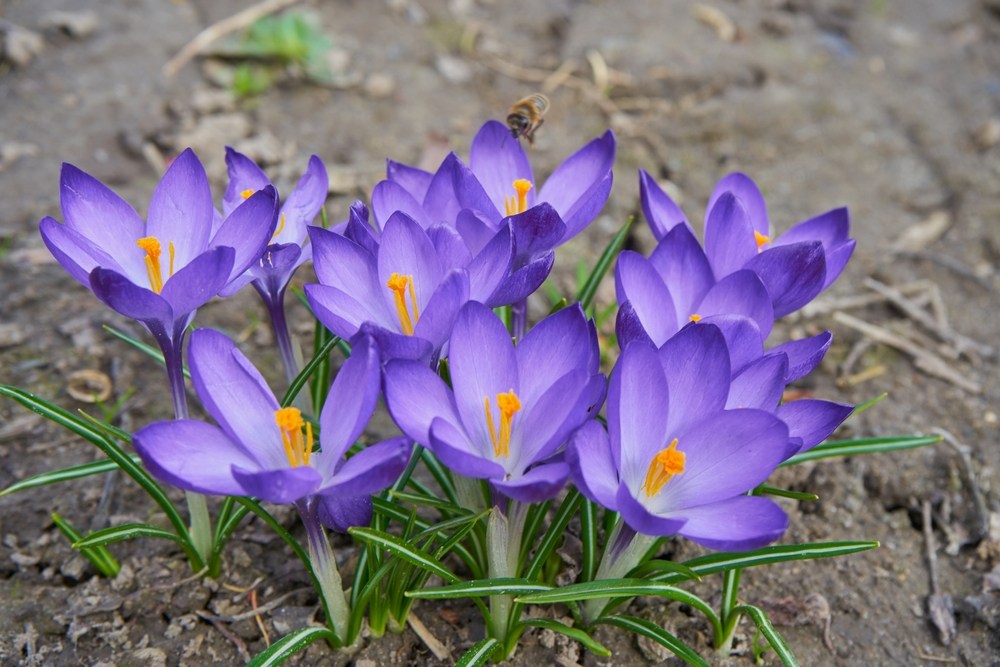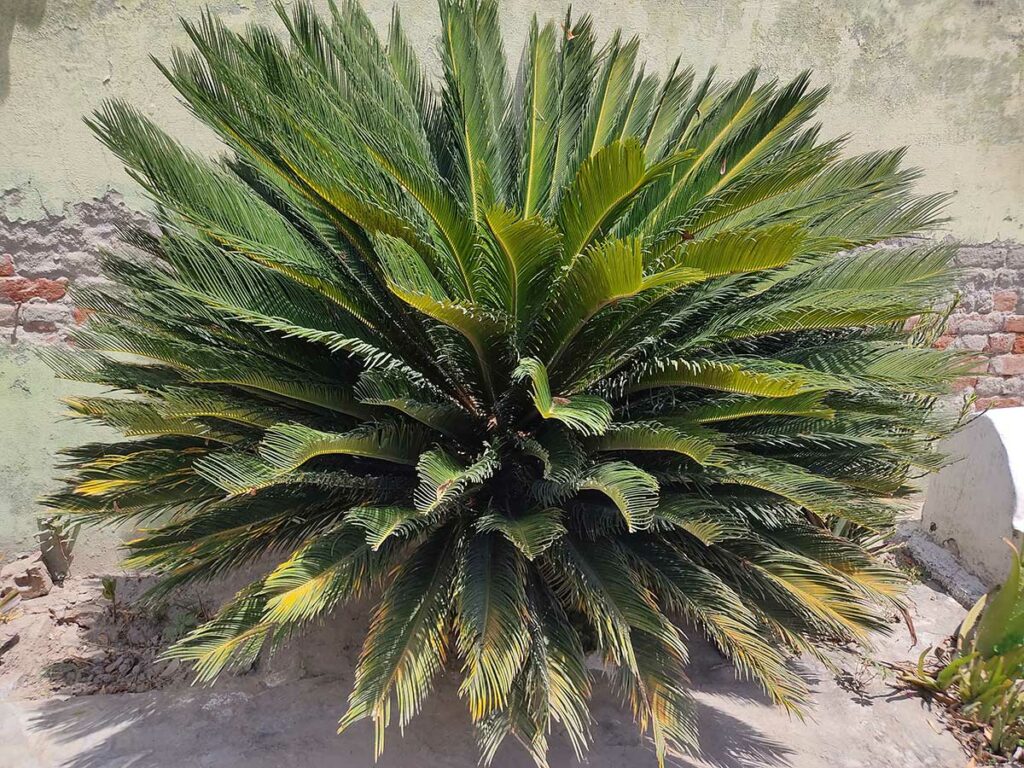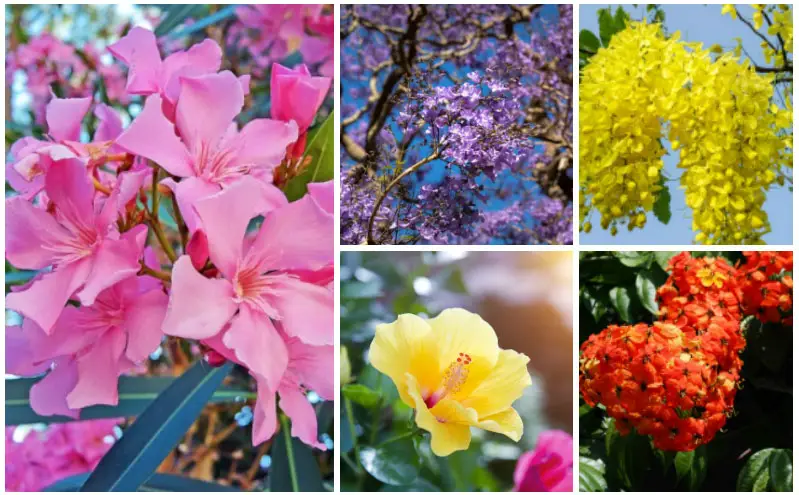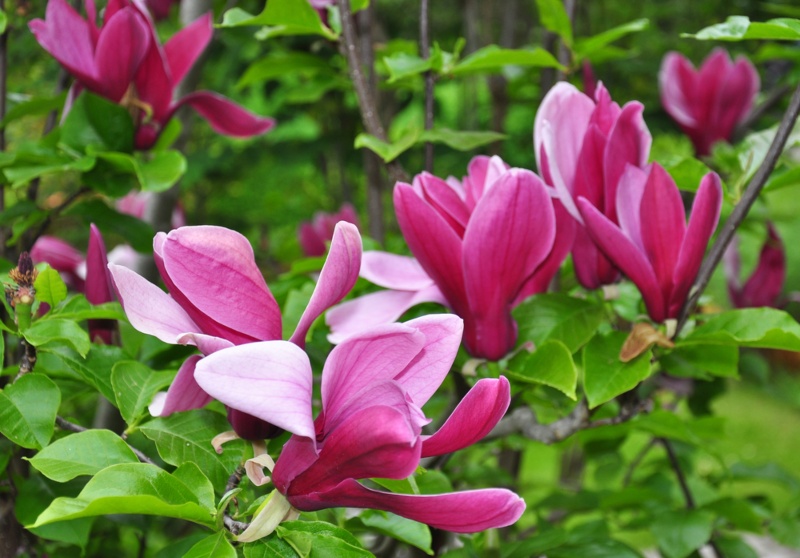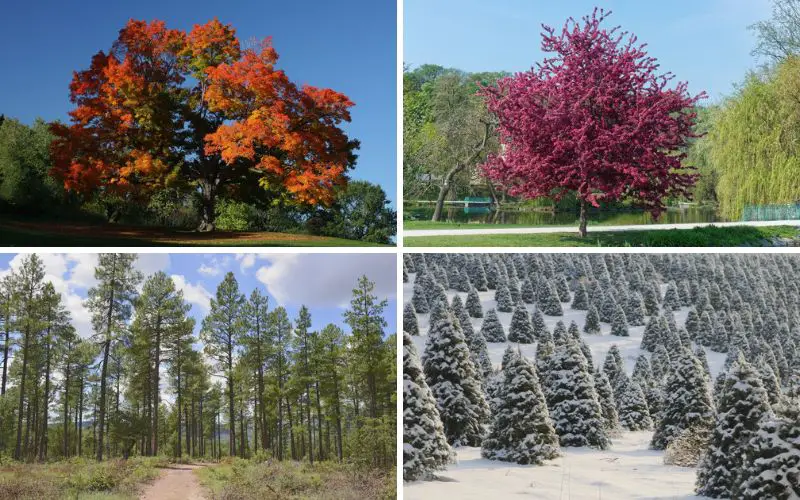
Minnesota might be the land of 1,000 lakes, but it is also the land of 1,000 tree species!
This heavily wooded state has many appealing tree options that you can consider growing on your yard or property.
Here are the 10 best options for Minnesota residents looking to give their yard a bit more color and life.
Black Ash
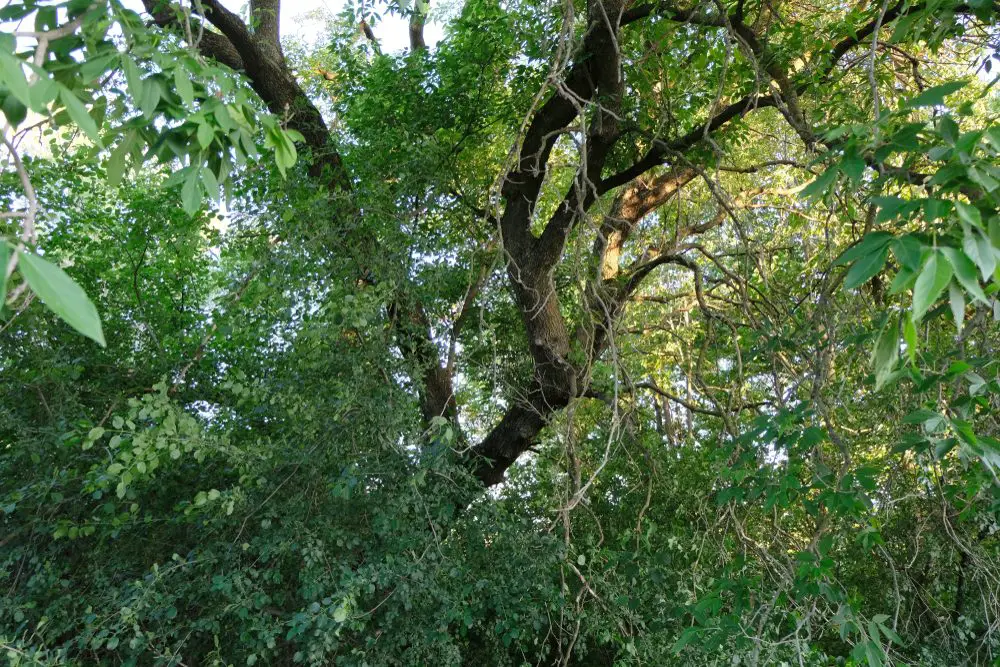
The Black Ash is a slow-growing tree with a tender body often found around one of Minnesota’s many wetland areas. They grow particularly well in swamps but can thrive in many areas. Surprisingly, the Black Ash is quite beautiful for being a swamp tree.
They have feather-like leaves and a very smooth bark that turns corky as they age. The branches create a round crown that produces an appealing overall appearance. This tree will bring animals to your yard, thanks to its small and flavorful fruit.
- Scientific name: Fraxinus nigra
- Plant Type: Deciduous
- Plant Size: 35-75 feet
- Sun Exposure: Full sun to partial shade
- Bloom Time: Summer through early fall
- USDA Plant Zone: 3-9
Black Cherry
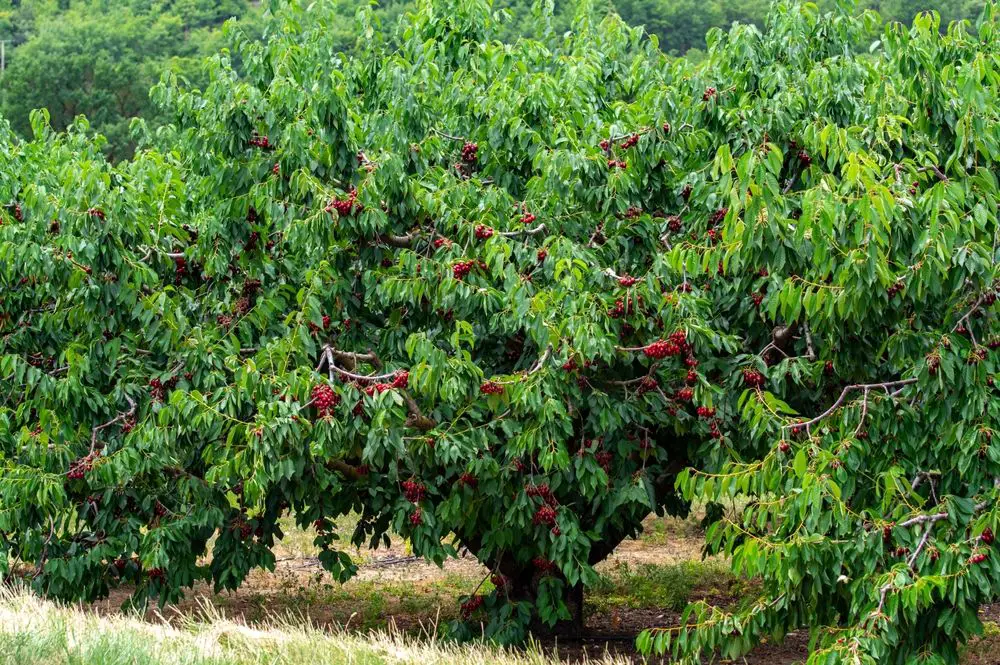
Black Cherry trees are a large species native to the region and common throughout many other states, including some parts of Wisconsin. They typically grow to mid-height, somewhere around 40-50 feet, and provide a nice shade or privacy tree.
Black Cherry has a distinctly scaly bark that will flip up as it matures to produce a unique look. They’re particularly appealing when grown near homes because their leaf changes can create an appealing and distinctive look.
- Scientific name: Prunus serotina
- Plant Type: Deciduous
- Plant Size: 30-60 feet
- Sun Exposure: Full sun
- Bloom Time: Spring into late summer
- USDA Plant Zone: 3-9
Crabapple
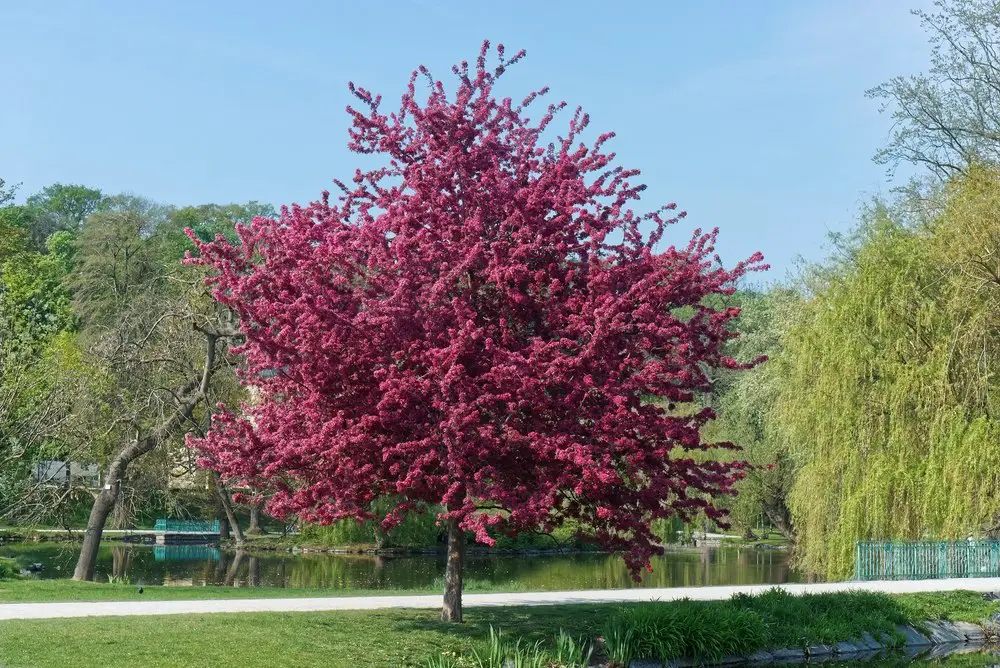
The Crabapple tree is one of the most popular in southwestern Minnesota for a reason. They’re easy to grow, produce attractive pink flowers, provide a fragrant aroma, and can tolerate hot and cold weather very well. Most grow very well in multiple soil types with minimal difficulty.
That makes them a common urban tree option, though crabapples can grow just as well in more rural areas. Each crabapple tree will produce fruit throughout the summer that you can pick and eat, though you should always check for worms before taking a bite.
- Scientific name: Malus
- Plant Type: Deciduous
- Plant Size: 20-25 feet
- Sun Exposure: Full sun to slight shade
- Bloom Time: Late spring to summer
- USDA Plant Zone: 4-8
Eastern Wahoo
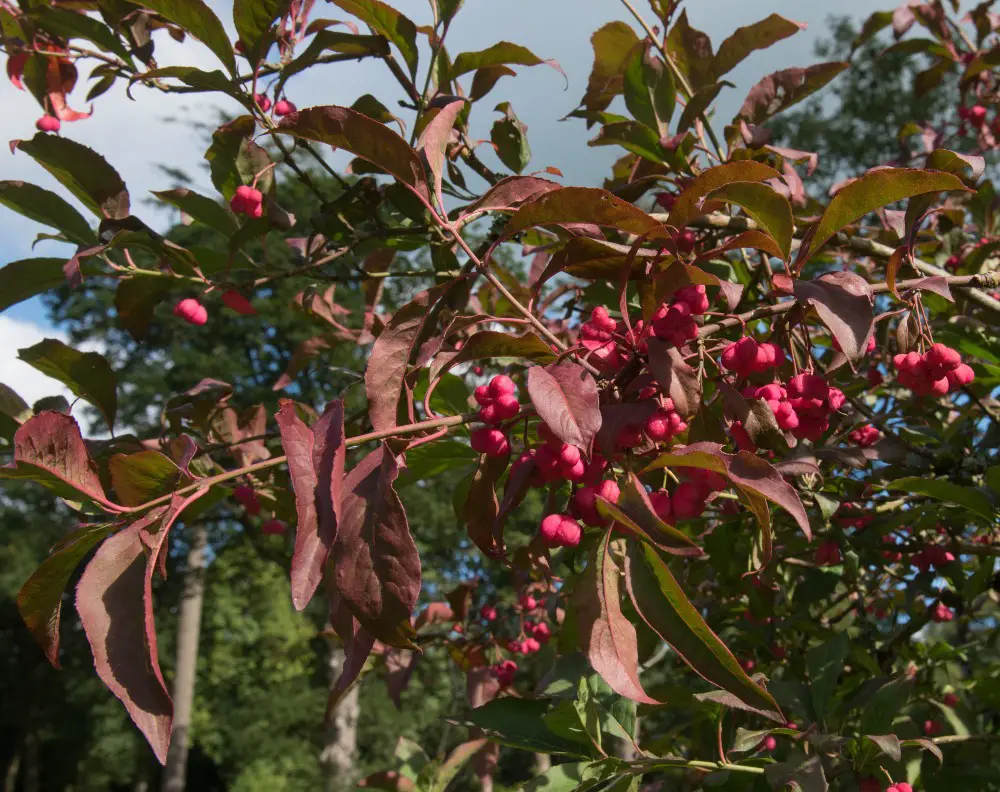
The Eastern Wahoo might have a funny name, but this small plant is no laughing matter. It is a colony-forming plant that produces thick growth throughout Minnesota forests and yards. The Wahoo produces attractive hanging purple flowers in the spring with a slight, but nice, smell.
Even better, the Wahoo produces large fruit that, while not edible, creates appealing colors. They are particularly nice to have when their colors change, as they can be quite beautiful. Thankfully, they’re also quite hardy and need minimal specialized soil or watering needs.
- Scientific name: Euonymus atropurpureus
- Plant Type: Deciduous
- Plant Size: 15-20 feet
- Sun Exposure: Fun sun to light shade
- Bloom Time: Early spring to summer
- USDA Plant Zone: 3-7
European Larch
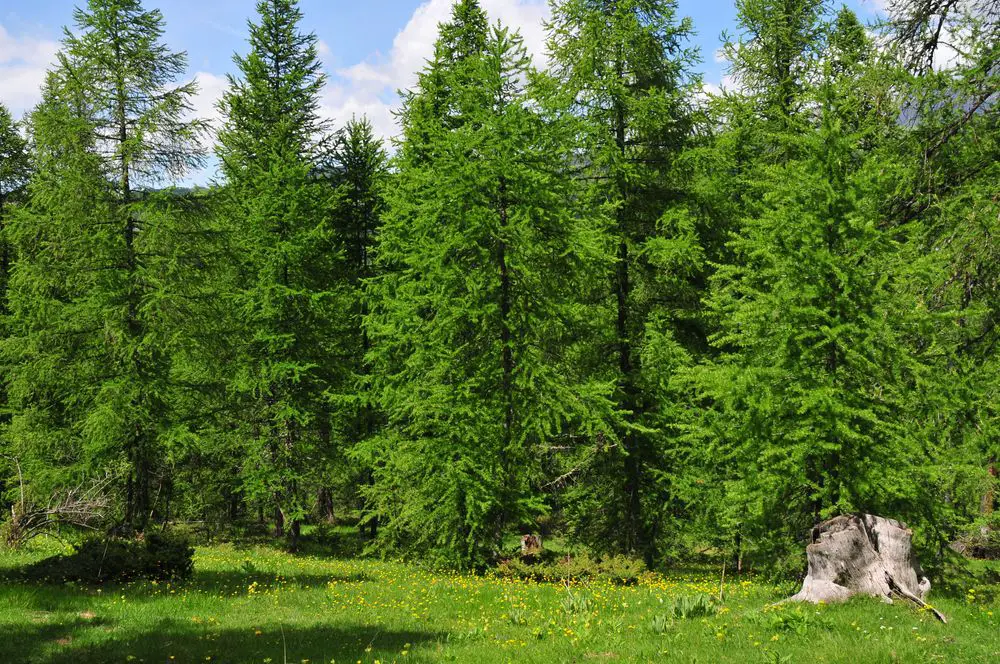
Besides being a hilarious punchline in a classic Monty Python sketch, the European Larch is an attractive tree with many unique features. For example, they actually lose their needles in the winter unlike other conifers, meaning they typically turn golden-yellow in the fall.
Larches also tend to grow rather large and work well in large public parks or properties. However, you can also trim them to keep them under control if you’re worried about them taking over your yard. Make sure to clean up their needles every winter to keep them from rotting.
- Scientific name: Larix decidua
- Plant Type: Conifer
- Plant Size: 70-100 feet
- Sun Exposure: Full sun
- USDA Plant Zone: 2-6
Manchurian Apricon
Though native to Korea, this tree grows well in Minnesota and produces a rounded and attractive spreading form. Its attractive spring flowers provide a touch of white to your yard, while their green foliage turns golden-orange in the fall for beautiful leaf tours.
While the Manchurian Apricot is resistant to winter weather, the fruit does tend to suffer frost damage in the early spring. The handsome fruits should provide a little touch of color to the yard as well, making this an attractive decorative tree.
- Scientific name: Prunus armenica var. Mandschurica
- Plant Type: Deciduous
- Plant Size: 15-20 feet tall
- Sun Exposure: Full sun
- Bloom Time: Early spring
- USDA Plant Zone: 3-7
Patriot Elm
The Patriot Elm thrives in southeastern Minnesota and is often a popular option for street streets. Their dense and attractive goliage produces a vase-shaped crown that withstands pollution, salt, pests, and other damage. They’re also easy to grow in bad soil and in many other environments.
That said, it prefers well-drained and moist soil and enjoys good exposure to sunlight. When grown properly, it will attract various migrant birds to your yards, including robins and other types of attractive species. Its narrow growth pattern makes it easy to grow in many areas.
- Scientific name: Ulmus wilsonian
- Plant Type: Deciduous
- Plant Size: 40-50 feet
- Sun Exposure: Full sun
- Bloom Time: Early fall
- USDA Plant Zone: 5-9
Ponderosa Pine
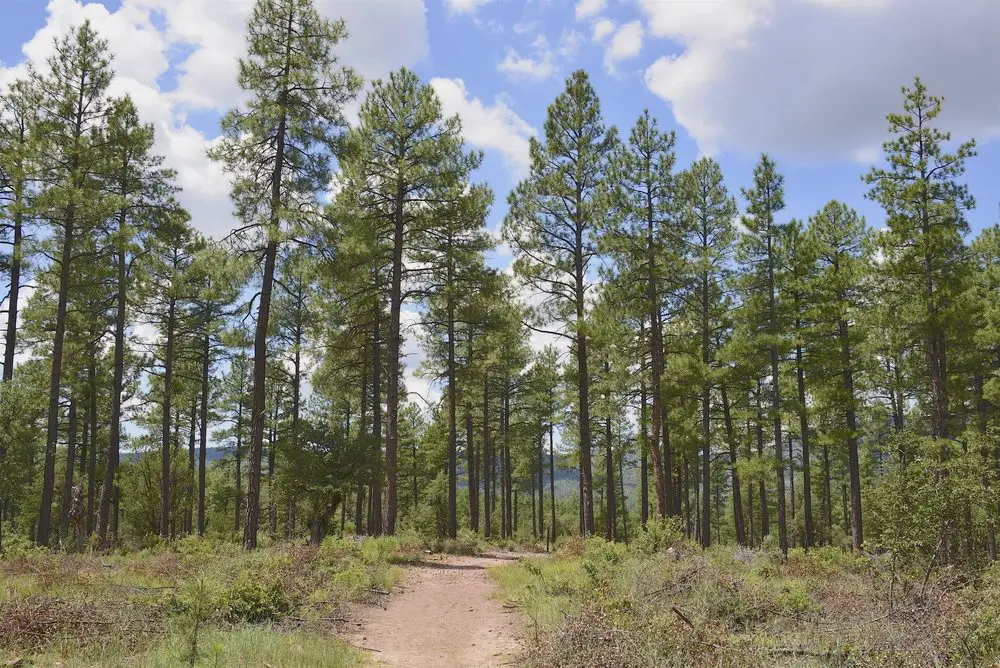
The Ponderosa Pine provides an attractive tree known for its yellow-brown bark with a rather scaly style. The plates of this bark create irregular and deep fissures that produce a unique appearance. They typically contain a bright green color and have a distinctive vanilla scent.
Ponderosa Pine thrives in most parts of Minnesota but often do best closer to the high lands and throughout hillier areas. However, they’re often found in more gravelly areas and can grow in just about any region without much difficulty.
- Scientific name: Pinus ponderosa
- Plant Type: Evergreen
- Plant Size: 60-100 feet
- Sun Exposure: Full sun
- USDA Plant Zone: 3-7
Sugar Maple
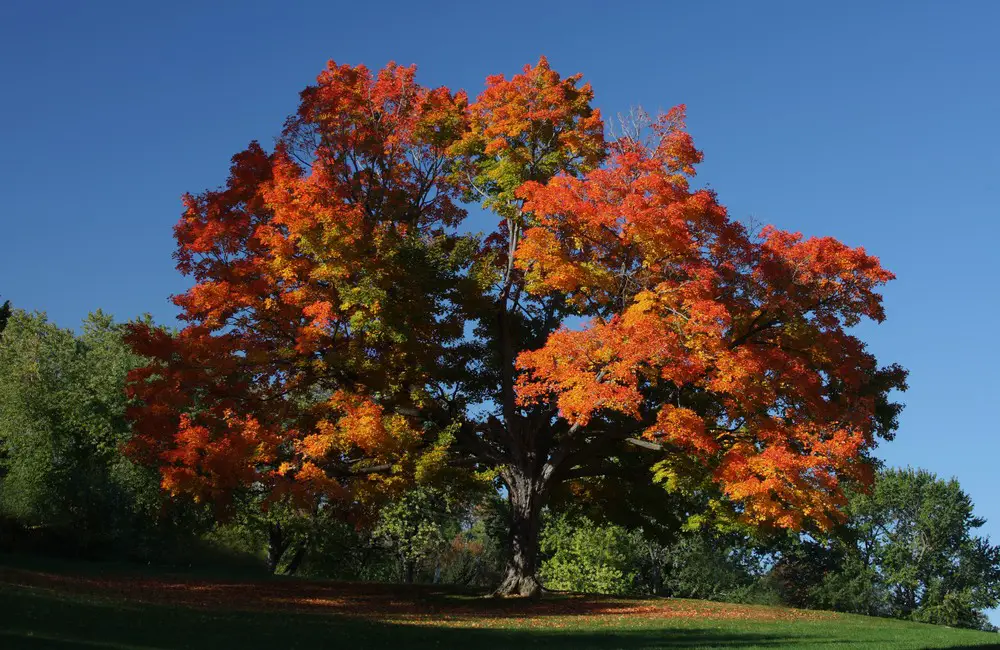
The Sugar Maple is a popular species because of its beautiful leaf colors. Though its leaves are a typical green in the spring and summer, they turn yellow and burnt-orange in the fall. Their lush foliage makes them a great shade tree or place to relax in the summer.
Though they don’t grow incredibly large, the Sugar Maple may also work well as a privacy tree or a wind shield for your home. Note that they also grow well with other trees, making them a good option for larger and more open growing environments.
- Scientific name: Acer saccharum
- Plant Type: Deciduous
- Plant Size: 60-75 feet
- Sun Exposure: Full sun
- Bloom Time: Spring to summer
- USDA Plant Zone: 3-8
White Fir
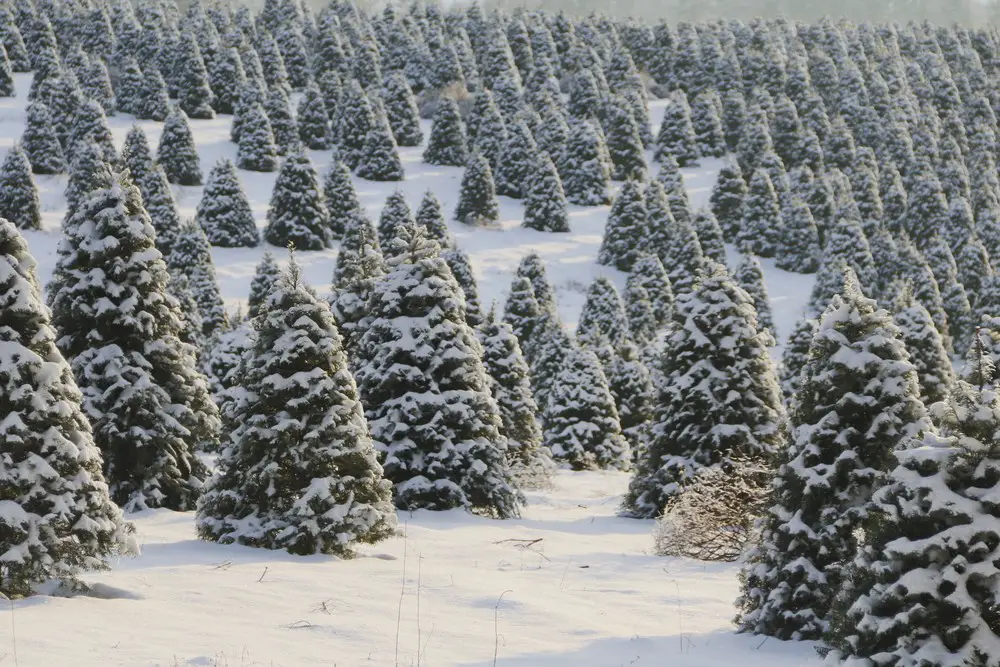
The White fir is an ornamental evergreen throughout North America that produces blue-green needles that curve upward and emit a lemon scent. They tolerate drought, heat, and cold very well and can be planted in just about any soil conditions, including its preferred moist and sandy soil.
The White Fir typically looks best when it snows because the branches get colored and create an attractive contrast between the green and white. Like all evergreens, it remains beautiful all-year round and may attract various animals to your yard.
- Scientific name: Abies concolor
- Plant Type: Evergreen
- Plant Size: 30-50 feet
- Sun Exposure: Full sun to partial shade
- USDA Plant Zone: 3-7

